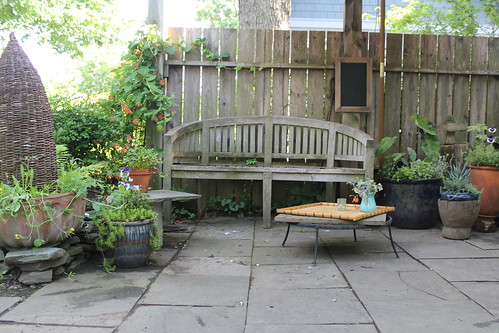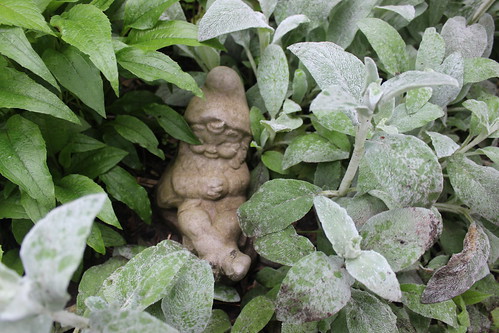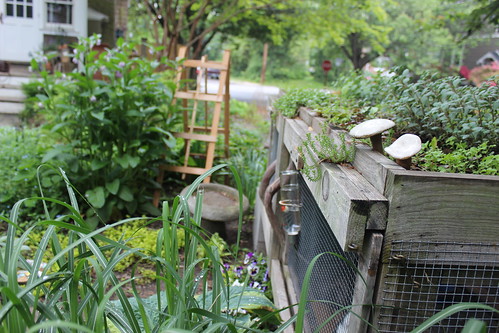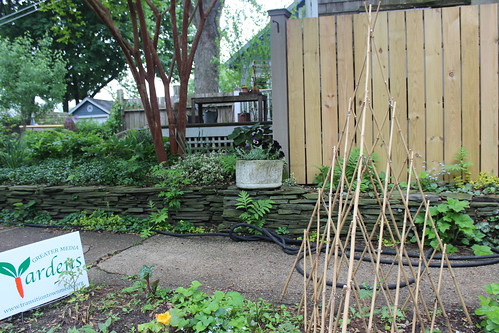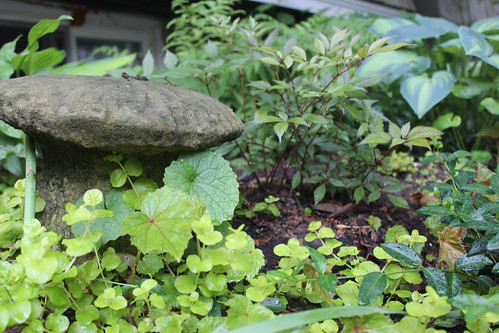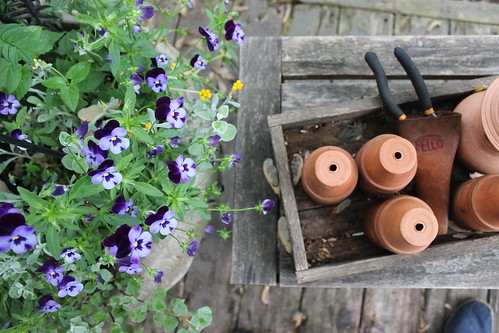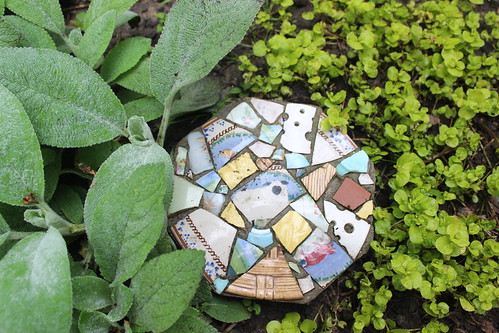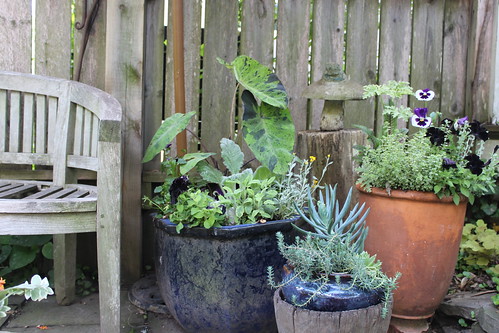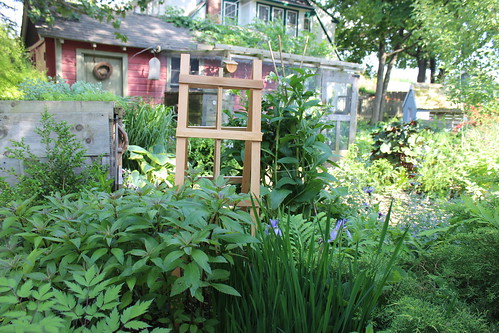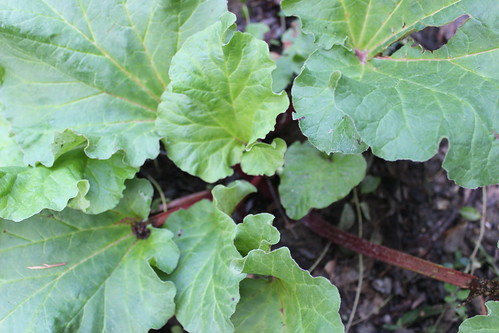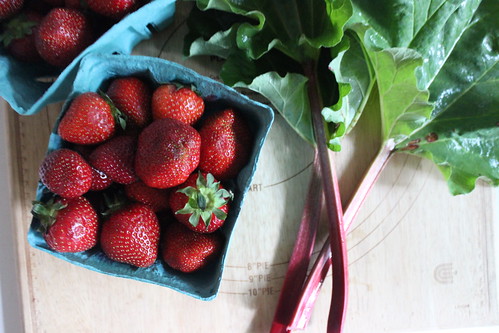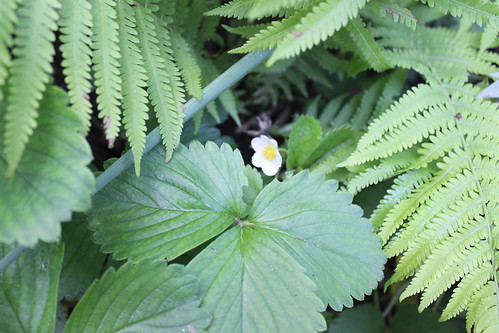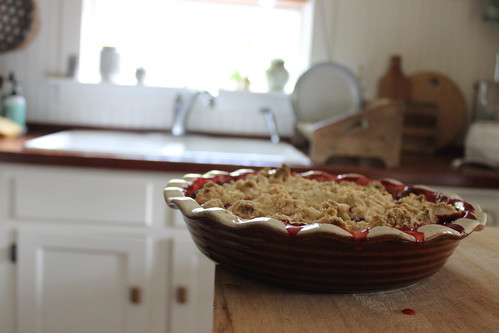A few weeks ago, when it was still properly spring (temps are in the 90s every day now, with humidity to match- I call that summer), a neighbor asked for my help in installing a nuc (which is a miniature bee colony with 4-5 frames filled with worker bees, a laying queen, and capped brood) into his new hive. Installing a nuc (pronounce it "nuke") is easy business- transferring the frame from one box into another, whereas installing a package of bees involved dumping thousands of bees from a screened box into your hive, hoping both that they accept their queen, who is pretty new to them, and that they stay put. I was glad to help. Here's Jim, putting his frames into place, late in the evening.
We waited several weeks and did a hive inspection this weekend. Lots of honey being put up, lots of new comb drawing going on, and lots of crazy comb building, too.
We scraped off the burr comb and extra comb they were building, top-bar style, off of the queen excluder and put it on his wall for the bees to clean up (the pieces you see here were full of uncapped honey, and the bees are clustered around a spot where we'd dripped quite a bit of honey). He has a pretty little hive and his bees seem happy! In the photo below, you see the bees at their entrance and his mason-jar feeder. They're slurping the syrup down!

This weekend I did some hive maintenance and landscaping work of my own. My spring has been so busy that my garden is really overgrown. The area around the hive had been mulched with pine straw when the top bar hive was in this spot, but weeds and baby coneflower volunteers (from the echinacea in the right foreground) were taking over. I pulled the weeds (and about 100 bearded iris), dug up the baby echinaceas, laid down a thick layer of newspaper, and mulched the whole area with pea gravel so that it would be easier for me to work with. I left a few of the baby plants around the hive, and moved a lavender to the far left borer of the pea gravel, hoping it would both be happy in this spot and feed the bees.

Later this week I'll do another inspection of this hive and my top bar hive, but my goal this weekend was to get the area back into workable/presentable condition. My top bar hive has a window, which is a very handy way to check on the bees without opening up the hive. I'd noticed fewer bees lately, and this morning's check confirmed my suspicions.
Can you see the queen cup? The long open tube in the center honeycomb? Well, there are about five of those closer to the hive entrance. I believe that my hive has swarmed. Again. Gary saw a thundercloud of bees barreling down the driveway, over the gate, and up into the top of a neighbor's giant oak tree the beginning of May. I knew that the
split we'd done in April wasn't enough, but I'd hoped that the swarm he watched would be the end of it. Seems not. At this point, I'll go into the hive, check for eggs and brood, and remove a few bars to give the bees more room (and harvest some spring honey) and hope that they won't keep swarming. In a langstroth hive you just put more supers on top of the hive to prevent swarming, but part of the charm (?) of a top bar hive is that it is good for increasing the bee population. As I myself have witnessed. But my mentor tells me that only a healthy hive with a growing population will swarm, so we must be doing well!
